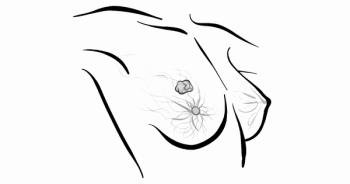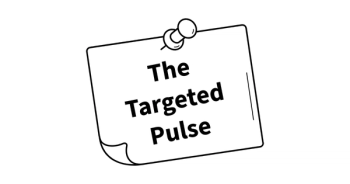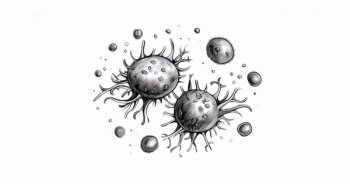
G-CSF Use Maintains Effective Docetaxel Dose in ARASENS Regimen for mHSPC
G-CSF plus docetaxel modification allowed almost all patients with mHSPC to receive an efficacious dose of docetaxel plus darolutamide/ADT.
Use of granulocyte colony stimulating factor (G-CSF) and docetaxel (Taxotere) modification allowed 97% of patients with metastatic hormone-sensitive prostate cancer (mHSPC) to receive an efficacious dose of docetaxel (relative dose intensity [RDI] >80%) in combination with androgen deprivation therapy and darolutamide (Nubeqa) or placebo. These findings from the phase 3 ARASENS trial (NCT02799602) were presented at the ASCO
“Use of G-CSF with or without dose modification occurred mostly after the first dose of docetaxel, as secondary prophylaxis,” noted investigators in a poster presented during the meeting. “We report the impact of docetaxel dose intensity and G-CSF use on the safety and efficacy of the ARASENS triplet regimen.”
Results
In the global, randomized, double-blind, placebo-controlled ARASENS trial, 1279 patients with mHSPC received docetaxel therapy with 1273 patients having docetaxel RDI data. In the darolutamide group (n=637) 98.3% of patients had an RDI greater than 80%, 89.2% had an RDI of greater than 85% and 82.4% had a RDI greater than 90%. In the placebo group (n=636) these rates were 97.6%, 88.4%, and 81.4%, respectively. These data indicate that darolutamide does not influence the docetaxel dose intensity received, according to investigators.
G-CSF Use
In the 1279 patients receiving docetaxel, 800 patients (63%) required dose modification of docetaxel, and 556 patients (43%) required G-CSF for secondary prophylaxis. Of the 800 patients who had dose modification of docetaxel, 376 received G-CSF (47%). “The addition of darolutamide did not increase G-CSF use or docetaxel modification,” investigators noted.
In the docetaxel dose modification subgroup for those receiving darolutamide (n=391), 47.6% had concomitant G-CSF, 0.5% had primary G-CSF prophylaxis, and 47.1% secondary G-CSF prophylaxis. Within this subgroup for those receiving placebo (n=409) these percentages were 46.5%, 0.5%, and 46.0%, respectively. In contrast, those in the overall population receiving darolutamide (n=642) 42.4% had concomitant G-CSF, 0.5% had primary G-CSF prophylaxis, and 41.9% had secondary G-CSF prophylaxis. Those in the overall population receiving placebo (n=637) these percentages were 44.6%, 0.3%, and 43.3%, respectively.
The following data were stratified by patients receiving darolutamide, with an RDI of greater than 85% vs 85% or less by patients receiving placebo with an RDI of greater than 85% vs 85% or less.
G-CSF Use by Region
Regarding use of G-CSF by region, investigators stated that overall, and in the Asia Pacific region, higher rates of G-CSF use were observed with lower RDI (85% or less) vs those with higher RDI (>85%). G-CSF use was highest in the Asia Pacific population vs the North American population and overall population. In the overall population receiving darolutamide, 69.6% of patients with an RDI of 85% or less received G-CSF vs 39.4% in patients with an RDI of greater than 85%.
In contrast, for those receiving placebo in the overall population, these rates were 74.3% vs 40.6%, respectively. In the North American population receiving darolutamide, 25.0% of patients with an RDI of 85% or less received G-CSF vs 31.0% with an RDI greater than 85%, and for those receiving placebo these rates were 50.0% vs 33.0%, respectively. For the Asia Pacific population receiving darolutamide, 82.8% of patients with an RDI of 85% or less received G-CSF vs 70.9% in patients with an RDI of greater than 85% and for those receiving placebo these rates were 93.3% vs 72.3%, respectively.
Survival Data
According to investigators, overall survival (OS) was similar in both the darolutamide and placebo groups at week 24 for those who achieved docetaxel RDI (85% or less or >85%). In the groups receiving darolutamide the median OS was not reached (NR) in both docetaxel RDI groups with an HR of 1.41 (95%CI, 0.88-2.26). In the placebo group, the median OS was NR in patients with a docetaxel RDI of 85% or less vs 45.8 months in those with a docetaxel RDI of greater than 85% with an HR of 1.17 (95% CI, 0.80-1.71).
Time to prostate-specific antigen progression (TTPSA) at week 24 was also similar between those receiving darolutamide or placebo and docetaxel RDI groups. In the group receiving darolutamide, the median TTPSA was not reached in both docetaxel RDI groups (HR 1.28, 95% CI, 0.71-2.33). For those receiving placebo, the median TTPSA was 21.7 months for those with a docetaxel RDI of 85% or less vs 19.0 months in those with a docetaxel RDI of greater than 85% (HR, 1.18; 95% CI, 0.81-1.73).
Baseline Characteristics
Baseline characteristics were mostly consistent between the docetaxel RDI greater than 85% vs 85% or less in both the darolutamide and placebo treatment groups except for geographic differences. For example, regarding ECOG score, 78.3% had an ECOG performance status (PS) score of 0 in the darolutamide RDI greater than 85% group vs 70.4% in the darolutamide RDI 85% or less group and 78.4 % of patients in the placebo RDI greater than 85% group had an ECOG PS score of 0 vs 70.1% in the RDI 85% or less group. Baseline characteristics also included Gleason score at initial diagnosis, median prostate-specific antigen concentration, median alkaline phosphatase, and de novo/recurrent disease.
Safety
Regarding safety, those with an RDI of 85% or less experienced more treatment-related adverse events (TRAEs) leading to docetaxel dose modifications than those with an RDI greater than 85%, investigators noted.
For those receiving darolutamide with an RDI of 85% or less, 7.2% discontinued docetaxel and 92.8% received dose modification of docetaxel, and for those with an RDI greater than 85%, these rates were 8.1% vs 26.0%, respectively. In contrast, for those receiving placebo with an RDI of 85% or less, 10.8% discontinued docetaxel and 97.3% received dose modification of docetaxel vs 10.5% and 25.3%, respectively, for those with an RDI greater than 85%.
In addition, grade 3 or greater TRAEs were more frequent in those with an RDI of 85% or less. These TRAEs included neutropenia (darolutamide, 66.7% vs placebo, 70.3%) and febrile neutropenia (darolutamide, 21.6% vs placebo, 17.6%), and almost all febrile neutropenia instances were grade 3, occurring in 91.3% of patients, investigators noted.
Discontinuation rates of docetaxel were low across all groups, which indicates that appropriate use of G-CSF allows for effective docetaxel administration and that darolutamide does not impact the tolerability of docetaxel, investigators stated.
Reference
Ong M, Suzuki H, Smith M. Concomitant G-CSF use in maintaining an efficacious dose and safe delivery of docetaxel in combination with darolutamide in patients with metastatic hormone sensitive prostate cancer (mHSPC): ARASENS, a phase 3 study. ASCO Genitourinary Cancers Symposium 2025. J Clin Oncol 43, 2025 (suppl 5):152-152) February 13-15, 2025, in San Francisco, California. doi.10.1200/JCO.2025.43.5_suppl.152










































